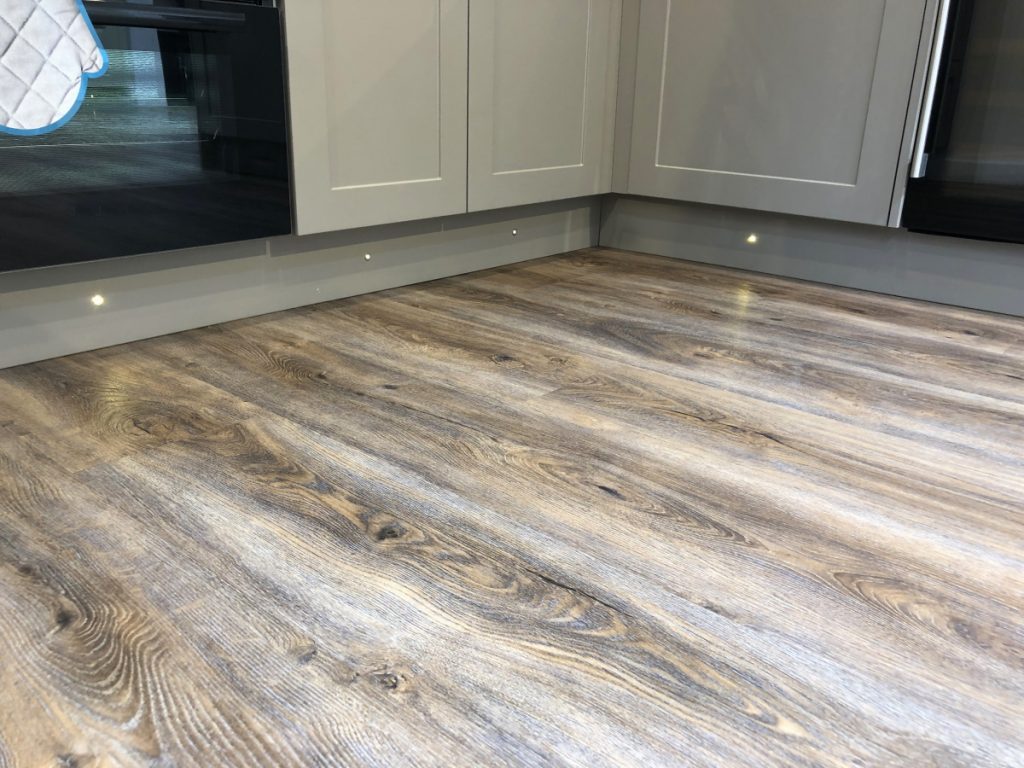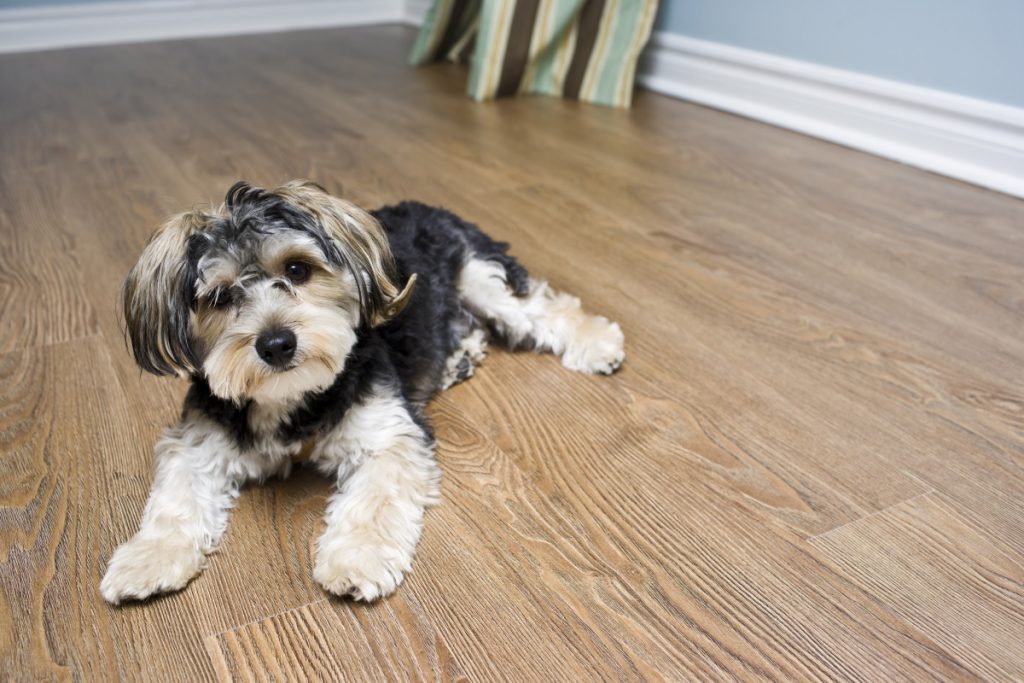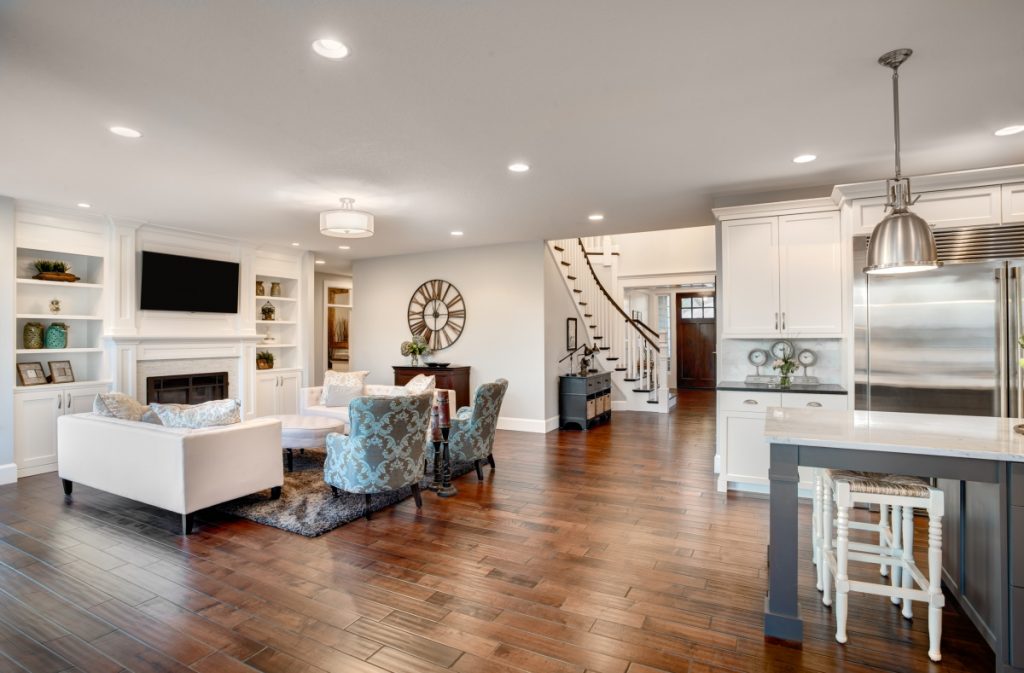Tips on Cleaning Laminate and Hardwood Flooring

Gorgeous hardwood flooring is always a major plus to the overall quality of a home.
However, costs and maintenance are important considerations, so you will have to weigh your options between the natural yet expensive hardwood flooring, or the synthetic yet affordable laminate flooring.
Whatever you choose, there are ways to keep up with the cleaning to make sure your floors are clean and spotless.
What Flooring Do You Have?
It’s a matter of preference and priority, but it’s important to keep in mind the type of material flooring you are working with, so you can determine how best to take care of your home.
It’s also possible that the flooring material of your home varies from room-to-room, so it’s important to keep that information in check. For a quick guide, here are some differences between the two types of flooring:
- Laminate: synthetic, inexpensive, “wood grain” photographic pattern is the same; often used in homes with pets

- Hardwood: authentic wood, expensive, different wood grain patterns; often used in homes with grand living rooms that maintain high resale value

How Often Should You Clean Flooring?
Let’s break down the cleaning requirements and frequencies that will reflect a good schedule:
- Daily: Dusting
This activity isn’t anything too heavy-duty. A daily sweeping is an ideal maintenance schedule to keep, so that dust doesn’t compile in corners, making it more difficult to deal with in the future. Having a daily once-over of your floors also allows you to spot if anything is out of the ordinary: for example, a piece of furniture is discovered to be scuffing your floor, or there is a liquid spill that might stain your floor if left for too long.
- Weekly: Mopping and Vacuuming
This is a more careful cleanse of your floors. It’s important to note that you should do damp-mopping, and never use a soaking wet mop on either laminate or hardwood floors. That can create irreparable damage. Vacuuming away the invisible dirt off the floor is also important maintenance for your home.
- Monthly (or as needed): Deep Cleaning (and Polishing, for Hardwood)
This section may seem optional, but for homes with a lot of foot traffic, and for those who want to maintain the beauty of their floors, this activity is essential. This could be more thorough damp-mopping. Note that you should never polish laminate flooring, as this removes the essential protective layer over the laminate.
How Do You Clean Floors?
Despite differentiating the two types of flooring, the way you clean laminate and hardwood are similar processes. What is different for each kind is the type of cleansers and tools that you use. Here are some top cleaning tips for both.
How to Clean Laminate and Hardwood Flooring
A daily sweep or dusting is a pretty easy task, but your weekly cleaning schedule should involve mopping. Here’s a look at the cleaning process.
- Look at the cleaning instructions that came with your flooring. You read that right, it’s essential to do some special reading! This is because your laminate manufacturer might have different specifications from other manufacturers. Through their instructions, they could give you recommendations on what cleaners and methods to use. Check the manual or their website for more information.
- Choose a good cleaner or create your own. Never use oil-based cleaners and other abrasive cleaners on laminate or hardwood floors. Supermarkets have flooring-specific cleaners stocked, and it’s important to read through them carefully to see which is best to use for your flooring.
- Do not use too much water. Laminate is a thin material and too much water is a no-no. Hardwood is organic and thus does not handle water very well on the surface. After doing a clean mop to remove the dirt from the floor, run a dry mop or cleaning cloth to take the excess water off the floor.
- Use protective mats for your doors and furniture. Both laminate and hardwood floors are susceptible to scratch damage from furniture, especially if the pieces are moved often. Watch where you find scuffs and streaks, from moving furniture to swinging open doors.
